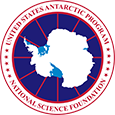Studies 1 though 6 performed by Science and Technology Corporation (STC), and 7 and 8 by U.S. Department of Transportation Maritime Administration (MARAD)  .
.
- Towing in ice—both seismic arrays and nets: Recommend a hull form, stern arrangement, and propulsion system that improves towing in ice.
- Bathymetry in ice: Recommend a hull form and appendages that promote improved ice management and reduce bubble sweep down over the acoustic windows for the multi-beam swath bottom-mapping system, sub-bottom profilers, Acoustic Doppler Current Profiler, fish-finding sonar and other acoustic sensors.
- Geotechnical drilling: Recommend a hull form, propulsion system, thruster system, and drilling arrangement for shallow water drilling in land-fast ice and open water.
- Establish requirements for a moon pool to deploy and recover Remotely Operated Vehicles (ROVs) and Autonomous Underwater Vehicles (AUVs) in ice and consider Conductivity, Temperature and Depth (CTD)/rosette deployment through the moon pool.
- Evaluate increased icebreaking capability and evaluate one or more propulsion concepts to satisfy mission requirements and develop a recommendation.
- Examine compliance with new International Maritime Organization (IMO) requirements for Arctic vessels including the provision for no pollutants to be carried directly against the vessel's outer shell.
- Investigate and recommend an approach to improve the ship’s self-generated noise signature and to improve scientific acoustic sensor performance.
- Analyze and recommend an approach on methods to reduce emissions from diesel engines and the incinerator.



